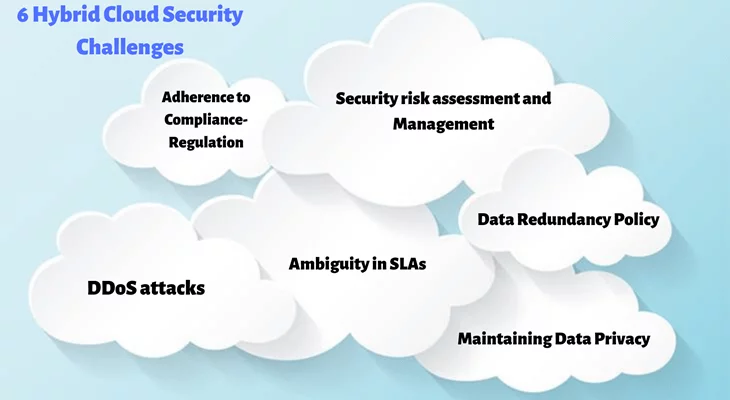The emergence of cloud computing and cloud storage has changed the dynamics of how the organizations create, store, execute, and operate the data.
Public cloud platforms allow organizations with little or no cloud structure to migrate to the cloud. But there are many organizations that set up their private cloud networks as it allows them to protect their intellectual property more securely.
But the private cloud platforms cannot offer the same versatility or the robustness as the public cloud does.
And hence the emergence of hybrid cloud is considered as the game-changing scenario as it offers the best of both the cloud platforms.
But there are few security challenges which you need to address while working on the hybrid cloud platform. We are enlisting 6 most crucial challenges which you need to overcome while working on the hybrid cloud platform below.
Hybrid Cloud Security challenges & a Fix for Them
Security Challenge #1: Adherence to Compliance-Regulation
With the stringent data security norms such as GDPR coming into effect, the regulatory requirements for staying compliant have become even stricter.
As the data travels from your private cloud network to the public cloud network in the hybrid cloud computing model, you need to take extra precautionary measures to stay compliant.
Solution:
Maintaining the individual compliance of private and public cloud is not enough. You also need to ensure that these platforms are following GDPR norms while the data transfer takes place and that they oblige to the regulatory requirements.
Security Challenge #2: Maintaining Data Privacy
The sensitive or proprietary data is hosted on private cloud platforms in most cases.
But when you need to perform complex operations, you need to allow the transfer of that data from your private network to your public cloud provider.
There is a risk associated with this data transfer as hackers may tamper with your proprietary information.
Solution:
The lack of proper encryption can be countered by having endpoint verification protocol, and a sturdy VPN, and an effective encryption policy which will ensure that even in the case of a security breach, the hackers won’t be able to decrypt the data.
Security Challenge #3: DDoS attacks
The Distributed Denial of Service (DDoS) is considered as one of the most threatening types of cyber-attack.
As the name suggests, these attacks generate from multiple resources and target a single location. They are harder to trace & detect, and by the time they are detected, your websites are compromised.
Solution:
You need to have a system that can monitor the incoming and outgoing traffic thoroughly to mitigate the DDoS attacks. This device needs to be good enough to defend the multi-vector attacks and at the same should be scalable and needs to have an immediate response.
Security Challenge #4: Ambiguity in Service Level Agreements (SLAs) & lack of clarity in ownership
When you are opting for a hybrid cloud platform, you are also handing over the governance of the data to your public cloud service provider.
There are also challenges that companies face with respect to the accountability of the data loss (If the data is compromised).
Solution:
You need to understand the terms and conditions offered by your public cloud provider and need to make sure that the service providers have ensured the confidentiality of the data.
While the transfer of the data takes place, organizations need to understand the security levels of the data protection and also define which party is accountable in case of the data loss.
Security Challenge #5: Security risk assessment and Management
Organizations need to perform all the necessary security measures and ensure the provision of a fail-safe system in case there is a security breach to ensure that their intellectual property is not compromised with.
Solution:
Organizations need to have IDS/IPS to scan malicious traffic. They also need to have a log monitoring system with NGFW (New generation Firewalls) or SIEMs (Security Information and Event Management).
Security Challenge #6: Data Redundancy Policy and MFA
Organizations need to have a data redundancy policy in place to ensure the back-up in case there is only one data center. Also, organizations need to set up the authentications methods to prevent any unauthorized authentication.
Solution:
Organizations can opt for more than 1 data center from one cloud provider or opt for multiple cloud providers to ensure they operate at an optimum level even in a case of one data center outage.
Also, organizations need to have a multi-factor authentication method to have multiple security checks to authenticate users.
You may also like to read:
CaaS vs. PaaS: Understand the Difference Between two Cloud Computing Services
Impact of Cloud Computing on the Financial Services Industry





